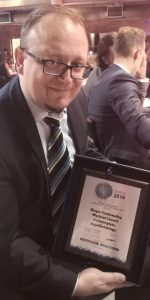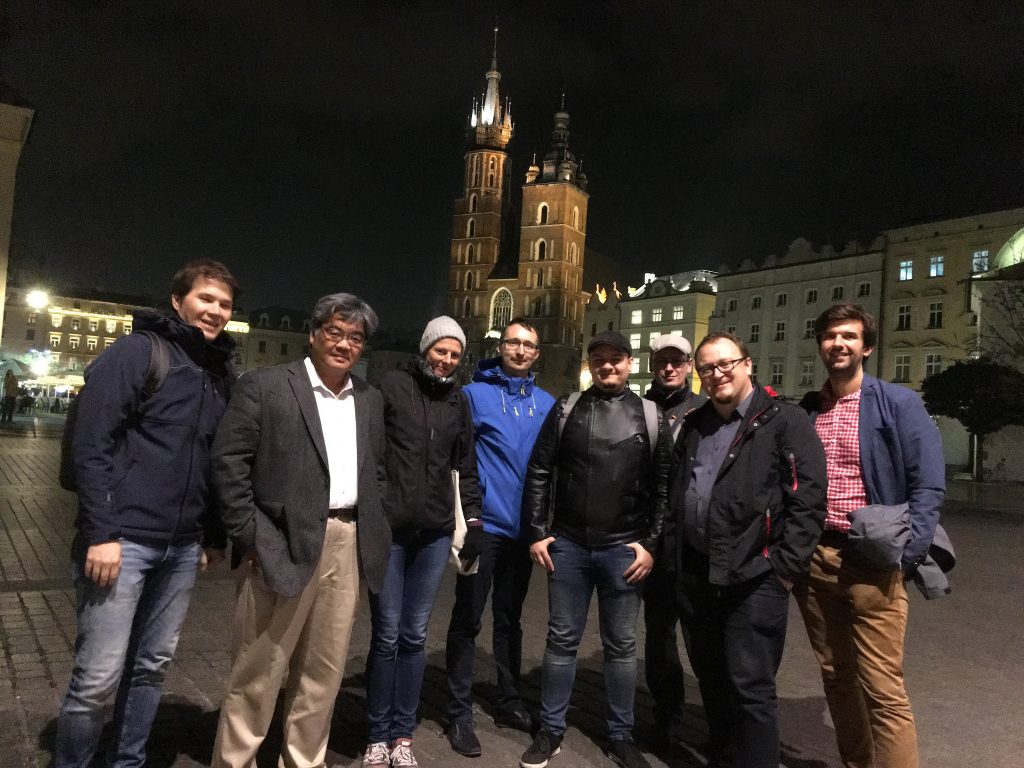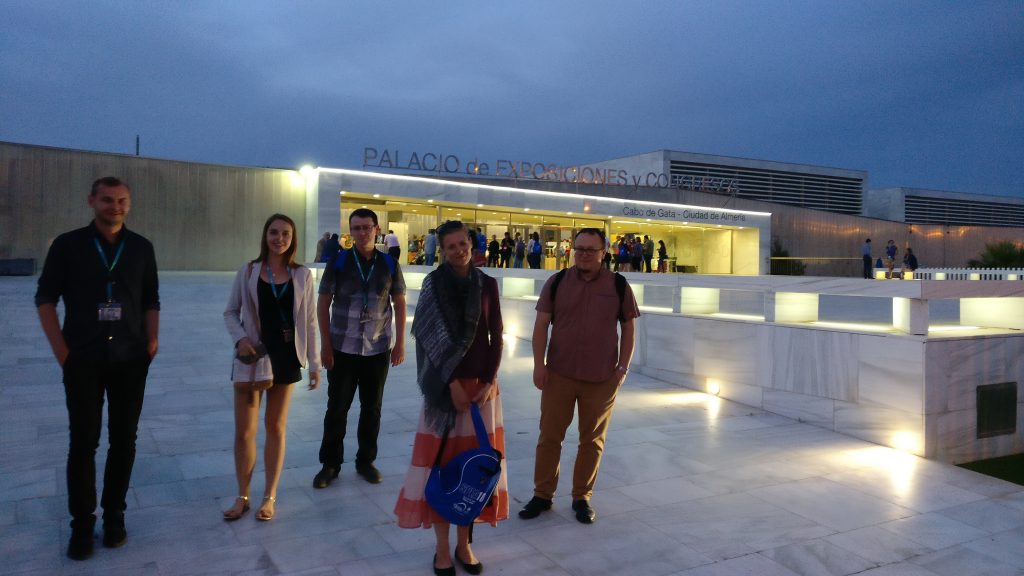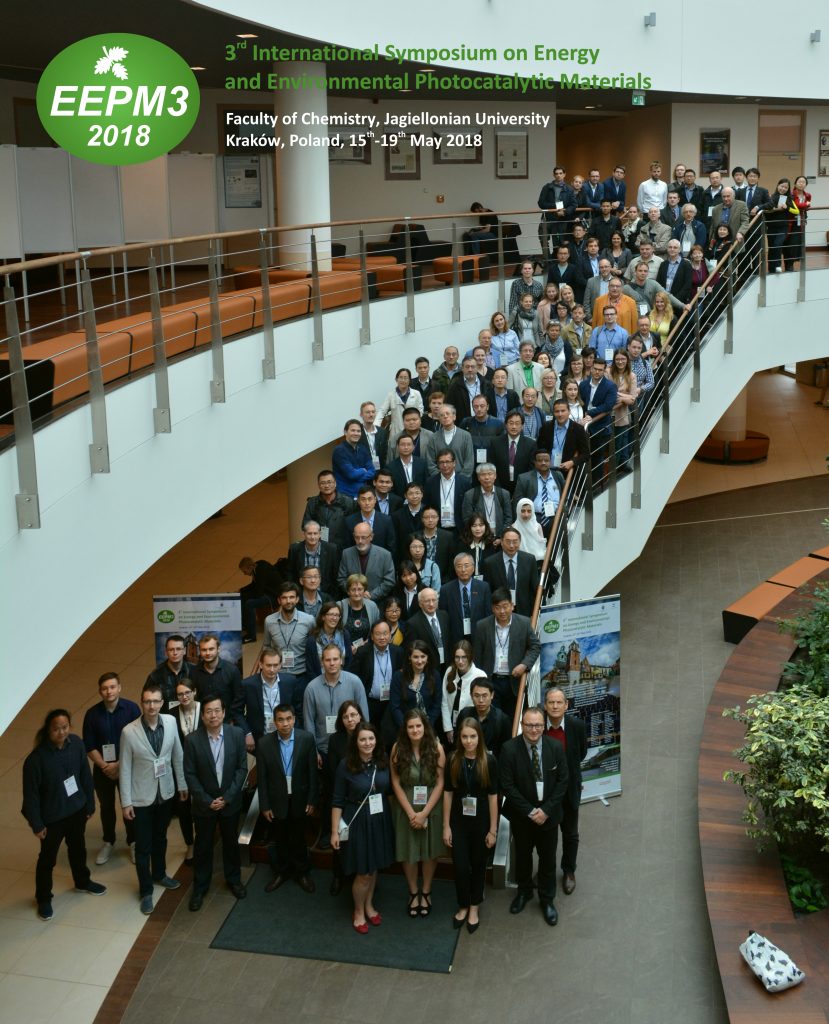 Award
Award
Symbol 2019 gala
Today Professor Macyk attended gala dinner at which he received the Symbol 2019 award. The Symbol is an award that shows the appreciation for actions, projects and achievements of the Group of Photocatalysis.

 Award
Award
Today Professor Macyk attended gala dinner at which he received the Symbol 2019 award. The Symbol is an award that shows the appreciation for actions, projects and achievements of the Group of Photocatalysis.

 General
General
We are looking for a researcher to work in TEAM project “In quest of a more efficient quantum solar energy exploitation in energy downhill and uphill photocatalytic processes (INGENIOUS)”.
The job offer can be downloaded from here.

 Bez kategorii
Bez kategorii
Today we have attended a group dinner with our guest prof. Minoru Mizuhata. We spent a lot of time talking and enjoying delicious polish cuisine. We have taken a group picture to memorize that event!

 Group members
Group members
Michał Pacia has got his PhD degree. Congratulations!
Activation of O2, H2O and H2O2 in photoinduced electron transfer processes.
As part of the dissertation research was carried to recognize various aspects of activation of the O2, H2O and H2O2 presence of TiO2 materials. In the case of anatase and rutile the influence of O2 and H2O2 presence on ROS generation in the irradiated system was determined. It was proven that rutile, compared to anatase, performs better in both O2 and H2O2 reduction. The influence of the exposed crystal facets on redox properties of materials were also investigated. The facets were put in an order (101) > (100) > (001) according to their activity in the H2O2 activation via reduction. Monocrystalline rutile materials, with exposed(110), (101) or (001) facets were also tested. The next step involved tests on surface modified TiO2 materials. Proper approach to determining the EBG in the case of surface modified materials was established. Activity of materials modified with organic compounds coordinating to the surface of TiO2 was tested. Additionally, a series of other semiconductors were investigated in terms of H2O and H2O2 activation properties. One of the crucial parts of this work was to verify the suitability of available ROS detection and determination methods in the systems containing heterogeneous photocatalysts. Weaknesses of methods based on reduction of XTT and chemiluminescence of luminol have been shown. Both high selectivity and sensitivity of the method to analyze production of hydroxyl radicals based on the oxidation of TA was confirmed. By means of EPR spectroscopy, EDTA has been confirmed to have very good holes quenching properties.
 Group members
Group members

Today Paulina has changed her marital state. She is now very excited and needs some time to relax to reach the ground state.
Congratulations!
 Award
Award
The Team of Photocatalysis has been granted with almost 1.4 million zloty for the joint Polish-Chinese research project entitled “Photocatalytic reduction of carbon dioxide based on p-type semiconductors”. The project is supported by the National Science Centre, Poland (NCN) and the National Natural Science Foundation of China (NSFC). Together with the group of Prof. Jiaguo Yu from Wuhan University of Technology we will focus on the development of p-type semiconducting photocatalysts, used alone or in combination with n-type semiconductors, for a more efficient solar fuels production encompassing one- and multi-electron CO2 reduction. Briefly, the artificial photosynthesis is our goal!
![]()

 General
General
Recently our work was published in Journal of Physical Chemistry Letters, and was present in the Highlights section. The work is focused on the misuse of the Tauc method in determining the band gap energy of semiconductors, and provides easy to use approach. The article also has Liveslides available in the Supporting information section that you all are welcome to watch.

 Group members
Group members
We are glad to inform that we are looking for people to work within the OPUS 12 project “Remotely light-controlled activity in dyes, proteins, catalysts: imaging, sensing, energy conversion”.
More detailed offer can be downloaded from following link:
![]()
 Conference
Conference
Few members of our group have attended the 10th European meeting on Solar Chemistry and Photocatalysis: Environmental Applications (SPEA10), held in Almería, Spain, on June 4th – 8th 2018. We have presented 3 lectures and 3 posters. The schedule of the conference was haeavily packed with lectures worth listening to. We are now back in Poland with new knowledge and ideas for future work!
 Conference
Conference
We have hosted the EEPM3 conference which was a great opportunity to exchange knowledge and experience in a wide range of fundamental and applied research areas pertaining to light harvesting, solar energy conversion and storage, environment remediation, clean technologies and sustainable chemical processes with the focus on photocatalytic and photoelectrocatalytic reactions.